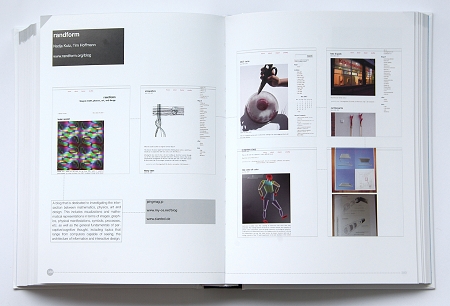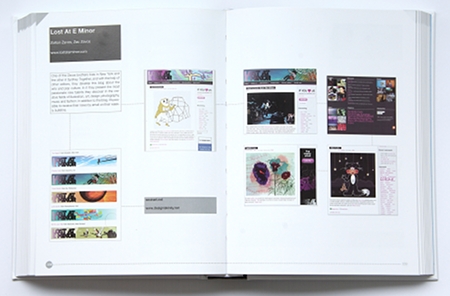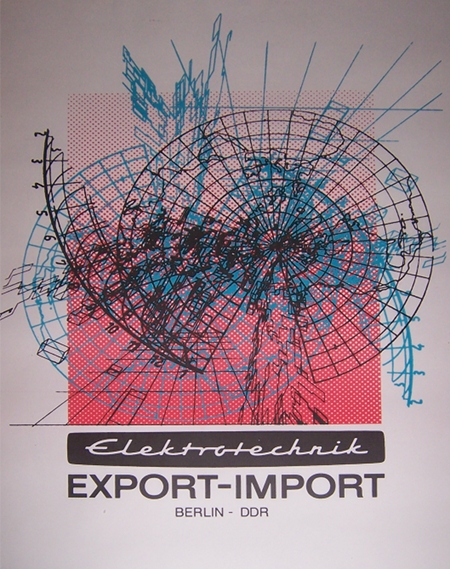Archive for 2009
fast ping
Wednesday, July 1st, 2009school
Saturday, June 27th, 2009short note: I’ll be in Paris in the upcoming week. No -I am not thinking about shopping Prada :-) but will attend a mathematical summer school. I’ll try to find time for blogging, but at the moment it seems there may not be an internet connection for that purpose.
preciouslover
Tuesday, June 23rd, 2009just in case you wondered what cat caspari of tonrand may have been up to lately – here a link to a new comment.
addition 26.02.13: The tonrand profile on last.fm had been erased. The music is no more available.
brandform
Sunday, June 21st, 2009
The frequent randform visitor knows that randforms main issue is not “popularizing science“.
Although we eventually may post an article which could be finally considered as “popular science” (last not least because we like to talk about science in a rather easy understandable way) we are mainly interested in discussing the communicational and perceptional manifestations of science. The visual ways of communication are here of special importance and thus we are especially proud that we were included in a carefully and thoughtfully edited book about blogs that are related to graphic design.
From the book cover:
Blog, weblog, logbook – these are words of our time. Although blogs have existed since the end of the 1990’s, they flourished only in recent years. Weblogs gained its popularity as a medium to tell stories and develop thoughts through dialogue.
With advancement of the Internet technology, creating and publishing a blog is as simple as it is to check your emails. What makes the difference is therefore, outstanding content. Blogs, Mad about design is a collection of the most interesting and exiting blogs that are related to graphic design.



Blogs, Mad about design
Mao Mao publications (2009) (blog)
ISBN 978-981-245-715-8
The text about randform in the book:
A blog that is dedicated to investigating the intersection between mathematics, physics, art and design. This includes visualizations and mathematical representations in terms of images, symbols processes, etc. as well as the general fundamentals of perceptive/cognitive thought, including topics that range from computers capable of seeing, to the architecture of information and interactive design.
on amounts
Thursday, June 18th, 2009
The area of the above squares shall visualize a certain amount of money.
A little puzzle for randform visitors:
The upper outer square visualizes an amount which is … times bigger as the amount of the upper inner square.
The lower outer square visualizes an amount which is … times bigger as the amount of the lower inner square.
isolated ground receptacle wall
Tuesday, June 16th, 2009Once again ironic sans posts an excellent idea: The outlet wall. Real solutions for real problems. Definitely the way to go. Unfortunately german wall outlets are less flat (more secure, though) so they wouldn’t make such a nice wall after all.
scaling facts
Sunday, May 31st, 2009In a recent post on his blog Terence Tao had the idea to scale the US budget and other data with the scale factor of 3/100 million. In particular the US population of 306.44 million shrinks -if one uses this factor- to about 9 people (306.44million/(100 million/3) =3.0644*3 =(approx) 9 people) which is about one to two average families. He did that in order to facilitate the comparision of the US-budget with a normal one-to-two family household budget.
I found that a useful visualization experiment and thus tried to do the same with the german budget – that is I used a scale factor which scales the population of Germany (originally 82.099 million down to 9, i.e. I used the factor 0.000 000 11 = 11/100 million (82099000*0.00000011 = 9.03..) and multiplied it with the corresponding amount in euro and in US-dollar (since I did this with an online currency calculator on different days there may be some variations). All calculations are without guarantee and I hope mistakes will be pointed out to me in the comment section. I abbreviate the number 1 billion = 10^9=1 000 000 000 with the letter B. So 1 B$ means 1 billion US dollar. Interesting figures are highlighted with an ->.
The revenues and spending in Germany are divided into the federal government (“Bund“) on one hand and the federal states (“Länder“) and districts (“Gemeinden“) on the other hand (here details in german). Both shares are very roughly the same. For example in 2005 the spending was
Bund 294.0 BEuro
Länder 259.3 BEuro and Gemeinden 153.3 BEUro
alltogether: 625.9 Beuro
I found no survey on the federal states and districts, besides this overall Länder and Gemeinden revenues and spending. The federal states are for example in charge for schools, I think they do not pay for military (?). However besides this the federal government budget (“Bund“) gives already quite a good overview over priorities.
I recovered the other data (like GDP etc.) to a great part from the federal office of statistics which hosts confusingly also the statistikportal. The website of this federal office is -mildly put- uncomfortable. That refers not only to the overall webdesign like for example it took me more than quite a while to find detailed readings on the GDP (since I started out at the statistikportal), but also to the overall accessability of data. For example I was also interested wether things like the Abwrackpraemie raise or lower the GDP or wether paying for volunteering could raise the GDP in some way…(just as a trick for the upcoming elections…), however in this GDP document it is even not possible to deduce within a reasonable amount of time which positions are summed over and which are subtracted.
Here some
But back to the budget discussion. The federal government (“Bund”) budget (Bundeshaushaltsplan) which is as explained above about half of the overall german budget is available as a pdf document here. From it one can read off a lot of the following figures (I tried approximately to reflect the ones Terence Tao chose). If there is no other link provided then the corresponding number in the below list is from this document.
Example: If the federal government (“bund”) has a budget of 283.200 BEuro for 2008 then this is a scaled budget of 283 200 000 000 Euro * 0.00000011 = 31152 Euro. Since this is as explained above about one half of the overall german budget the state family of 9 has thus an approximate budget of 2*31152 Euro =
->(approx) 60 000 Euro (per year).
That is 2* 383.343 B$=2*383 343 000 000$ which gives a scaled budget of 2*42167 $ =(approx) 84 000 $ (per year) which is in the same range as the US budget of 75 000 $ (per year), which appears in Terence Taos list. Compare these 60 000 Euros to the salary of 500 000 Euros which are not enough for the best.
The green number is a real budget number which is rescaled to the budget of a “family of 9 people” in Euro, the blue number gives the same amount in dollar so that it is comparable with the US budget in Terence Taos list.
- Health insurance: 3.692 BEuro 4.993 B$ 406 Euro 549 $
- Children payments (Kindergeld): 0.3 BEuro 0.41 B$ 33 Euro 45 $
- Social Security/unemployment payments: 94.313 BEuro 127.614 B$ 10374 Euro 14038 $
- consequence of war payments: 3.200 BEuro 4.332 B$352 Euro 477 $
1.349 B$ 109 Euro 148 $
- Autobahn:3.323 BEuro 4.496 BEuro365 Euro 494 $
- economic collaboration and development:4.985 BEuro 6.748 B$548 Euro 742 $
- Department of Education: 2008 budget 9.350 BEuro 12.655 B$1028 Euro 1392 $
- Department of Education: 2009 budget (planned): 10.2 BEuro 14.262 B$ 1122 Euro 1569 $
- DFG (Deutsche Forschungsgemeinschaft) 0.840 BEuro
1.136 B$ 92 Euro 125 $ - Maths & Physical Sciences: ?
couldn’t find a total number but humanities, natural sciences (i.e. chemistry, physics, math, geosciences), life sciences and engineering hold each about an equal share) so - natural sciences approx: 0.210 BEuro 0.284 B$ 23 Euro 31 $
759 $
- nuclear energy:0.222 BEuro 0.310 B$ 24 Euro
34 $
- ->renewable energies: 0.039 BEuro 0.054 B$ 4 Euro 30 cents
6 $
(some additional support for renewables comes in through the Feed-in tarif) - mining (mostly subsidies):2.164 BEuro 3.023 B$ 238 Euro
303 $
- coal mining: 1.900 BEuro 2.650 B$ 209 Euro 291 $
- Abwrackpraemie (car scrapping bonus) (source) 5 BEuro 7.068 B$ 550 Euro 779 $
- Opel retrieval (which is without any environmental requirements if I understood correctly):
- bail: 4.5 BEuro 6.361 B$ 495 Euro 700 $
- temporary loan: 1.5 BEuro 2.120 B$ 165 Euro 233 $
- cars and electricity: economic stimulus for electromobility: 0.5 BEuro 0.706 B$ 55 Euro 77 $
comment: de facto this amounts to a percentual decline in investments in renewable energies, which seems to be an overall trend – the International Energy Agency estimates that“for 2009 as a whole investment in renewables could drop by as much as 38%, although stimulus provided by government fiscal packages can probably offset a small proportion of this decline”
- up-to-the-second update on the budget deficit on the website of Bund der Steuerzahler (community of taxpayers)
- Additional appropriations (not included in regular budget)
- Afghanistan: ?:
- -military operations?
- development aid ?
- Afghanistan: ?:
Air force NY flyoverhelicopter flights politicians:?- National GDP 2008: 2 489.400 BEuro 3336.527 B$ 273 834 Euro 367 018 $
- GDP per capita 2008: 30 322 Euros 42 366 $
- (note: the above gives for 2008: 3336.527 *10^9$/82.099 * 10^6 = 40640.287 $ = 30321.899 Euros which compares to 40415.409 $ in 2007)(quaterly report 2008. -> the report how the GDP recently decreased rather dramatically)
- ->estimated risks in german banks: 816 BEuro 1140 B$ 89 760 Euro 125 700 $
- World GDP 2008: 39 079 BEuro 54 589 B$Terence Tao: 1,680,000 *3.7=(approx) 6.2 million $ =(compares to) 6 004 700 $ = (approx) 6 million $ (2007)
- ->Credit Default swaps notional value (2008) 57 325 B$ 40 996 BEuro 4 509 600 Euro =(approx) 4.5 million Euros 6 305 700 $ =(approx) 6.3 million $ (note: Terence Tao used a different source)
- ->OTC derivatives notional value (2008): 489 354 BEuro 683 725 B$ 53 828 900 Euro =(approx) 54 million Euro 75 209 800 $ = (approx) 75 million $ (note: Terence Tao used a different source)
supplement 11.10.11: An example how one could visualize the above is at wheredoesmymoneygo
no email
Wednesday, May 27th, 2009I am currently without email, since my mailaccount at the LMU had unexpectedly been cut off. The webmaster seems to be at a workshop so please be patient.
as of friday: my mail is functioning again for the time being
about that wall through the streets of Berlin
Wednesday, May 20th, 2009
(old GDR advertisement of the electrical engineering industry)
There was a longer discussion on that randform post about oppression in the GDR. Within the discussion a randform reader called Ditta found my opinion that “part of all that huge mess of a wall through the streets of Berlin was plain economic warfare” absurd. This is still my opinion: there were surely people running away from East Germany for pure political reasons, but I dare say that a not to small part left for economical reasons. Moreover this reasoning doesnt justify the wall, I think it is clear that the wall was an inhuman mistake. The discussion just sheds a different light on the involved motivations.
I currently have not the time to discuss this in detail and since this is a different thread I hereby link to the comment which led to Ditta’s reaction and ask people who wish to discuss this issue to leave their comments here at this thread.
Blogwise – I am currently preparing a blog entry, which takes more time than I would have suspected…in particular I am not on vacation.